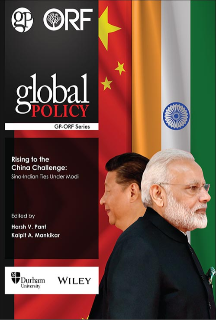
The software services industry is undergoing an unprecedented transformation. Emerging technologies, particularly Artificial Intelligence (AI), are redefining the contours of the industry and making companies re-evaluate business models that have been successful for decades. Coming on the back of COVID-19, global economic headwinds, geopolitical unrest and the growth of the gig economy, software services, which pioneered the IT revolution, are looking at a new phase of transition as they grapple with the disruptive changes brought about by emerging technologies such as AI, Blockchain, and Internet of Things (IoT).
Present perfect
The software industry globally took shape
in the 1960s and included businesses for software development, maintenance, and publication to address customer requirements. In India, the industry was
born in Mumbai in 1967 with the establishment of Tata Consultancy Services (TCS). Following its partnership with Burroughs, TCS became India’s first software services exporter 10 years later. Ever since Prime Minister Rajiv Gandhi’s government prioritised the IT sector, Indian companies such as TCS, Infosys, Wipro, and HCL, among others, have expanded their footprint globally, delivering software services as their primary business.
The software industry globally took shape in the 1960s and included businesses for software development, maintenance, and publication to address customer requirements.
India’s
exports of software services (excluding exports through
commercial presence) increased by 17.2 percent to US$156.7 billion during 2021-22. The Indian IT–
Business Process Management (BPM) sector overall
employed 4.85 million people as of March 2022. The National Policy on Software Products 2019 predicts India to generate
10,000 technology startups in the software services sector, including 1,000 in Tier 2 and 3 towns, generating 3.5 million jobs by 2025, significantly benefiting freshers graduating from Indian universities.
Future
While these promising growth indicators highlight the robust health of India’s software services sector, technology companies are facing a totally different challenge arising from the impact of emerging technologies on their human resources. The year 2023 is turning out to be
difficult, with many IT companies
trimming their workforce. Stability AI CEO Emad Mostaque
predicts that many of India’s coders will lose their jobs to AI, as it now requires far fewer people to develop software.
The National Policy on Software Products 2019 predicts India to generate 10,000 technology startups in the software services sector, including 1,000 in Tier 2 and 3 towns, generating 3.5 million jobs by 2025.
The companies share one problem as a common denominator: How do they transform their business model to address AI-enabled changes that seem to be moving at the speed of light? Especially in the last 6-9 months,
ChatGPT has captivated global attention with its AI potential. ChatGPT, an AI Chatbot, acts like a human assistant answering questions based on human prompts. The tool is transforming the ideation and creative process in industries as diverse as advertising, marketing, and engineering.
Another tool,
GitHub Copilot, has revolutionised the field of AI-assisted code development by providing coding support in major software languages. Likewise, Databricks has released an AI
tool that accepts
English as input and outputs the needed code. These tools are available today for anyone to use.
Customer service, which has long been supported by the Indian Business Process Outsourcing (
BPO) industry, is already witnessing chatbots, touted as “
the next big thing in technology”, being increasingly
deployed in place of human agents.
Databricks has released an AI tool that accepts English as input and outputs the needed code.
As these tools are used, they continue to collect data and learn from human feedback. They improve their accuracy with more usage. They might not be perfect today, but they are good enough for a start and with a rapid ability to learn.
Impact on the software services industry
The software services business model primarily involves headcount-based billing. Large IT companies typically have thousands of employees on their rolls. More projects and billable resources translate into enhanced revenues for them.
The competition landscape for Indian IT companies is undergoing a transformation. In addition to the usual and historical competitors, there are companies that are releasing AI-based tools to address specific customer needs. The traditional customers of the software services companies have access to these same tools, many of which have open-source variants. They, too, can now avail of these tools and leverage AI’s power with much fewer resources.
The traditional customers of the software services companies have access to these same tools, many of which have open-source variants.
Thus, a company with fewer employees working with AI tools could disrupt the software services business model. They can offer services at a fraction of the cost. Such human versus AI balancing will result in margin compression in the industry and clearly differentiate between the companies that leverage AI and those that don't. By using such tools, software developers have reported
productivity gains of 30 to 50 percent.
It is evident that the current business model will need to transform to quickly accommodate the new AI-enabled software development landscape. With the employee productivity gains available today by using AI tools, companies would opt for human resource rationalisation for leaner salary rolls and beefier balance sheets. Further, the skill set needed for this transformed business environment would also be different.
Software services companies with access to business processes, data, and AI-ready resources would be better placed to make this business model transformation. Innovation would be the key. The business model that paid rich dividends so far would need to be reworked in this new AI-enabled business architecture. This transformation would need exemplary leadership not only from the companies but also from the other stakeholders like the trade bodies, governments, and civil society.
With the employee productivity gains available today by using AI tools, companies would opt for human resource rationalisation for leaner salary rolls and beefier balance sheets.
While the verdict is still out, a growing number of tech companies have accepted AI integration as a
significant factor for layoffs. The World Economic Forum predicts that by 2025, while
AI will create 97 million new jobs, automation, AI and the resulting “new division of labour between humans and machines” will make 85 million human jobs redundant across 15 industries and 26 economies. As AI gains prominence in the software services industry, how India's tech companies walk the man versus machine tightrope will determine the software services industry’s employment generation promise in the coming years.
Jacob Ninan is the co-founder of Kottackal Business Solutions Private Ltd., a software product development firm.
The views expressed above belong to the author(s). ORF research and analyses now available on Telegram! Click here to access our curated content — blogs, longforms and interviews.



 The software services industry is undergoing an unprecedented transformation. Emerging technologies, particularly Artificial Intelligence (AI), are redefining the contours of the industry and making companies re-evaluate business models that have been successful for decades. Coming on the back of COVID-19, global economic headwinds, geopolitical unrest and the growth of the gig economy, software services, which pioneered the IT revolution, are looking at a new phase of transition as they grapple with the disruptive changes brought about by emerging technologies such as AI, Blockchain, and Internet of Things (IoT).
The software services industry is undergoing an unprecedented transformation. Emerging technologies, particularly Artificial Intelligence (AI), are redefining the contours of the industry and making companies re-evaluate business models that have been successful for decades. Coming on the back of COVID-19, global economic headwinds, geopolitical unrest and the growth of the gig economy, software services, which pioneered the IT revolution, are looking at a new phase of transition as they grapple with the disruptive changes brought about by emerging technologies such as AI, Blockchain, and Internet of Things (IoT).
 PREV
PREV


